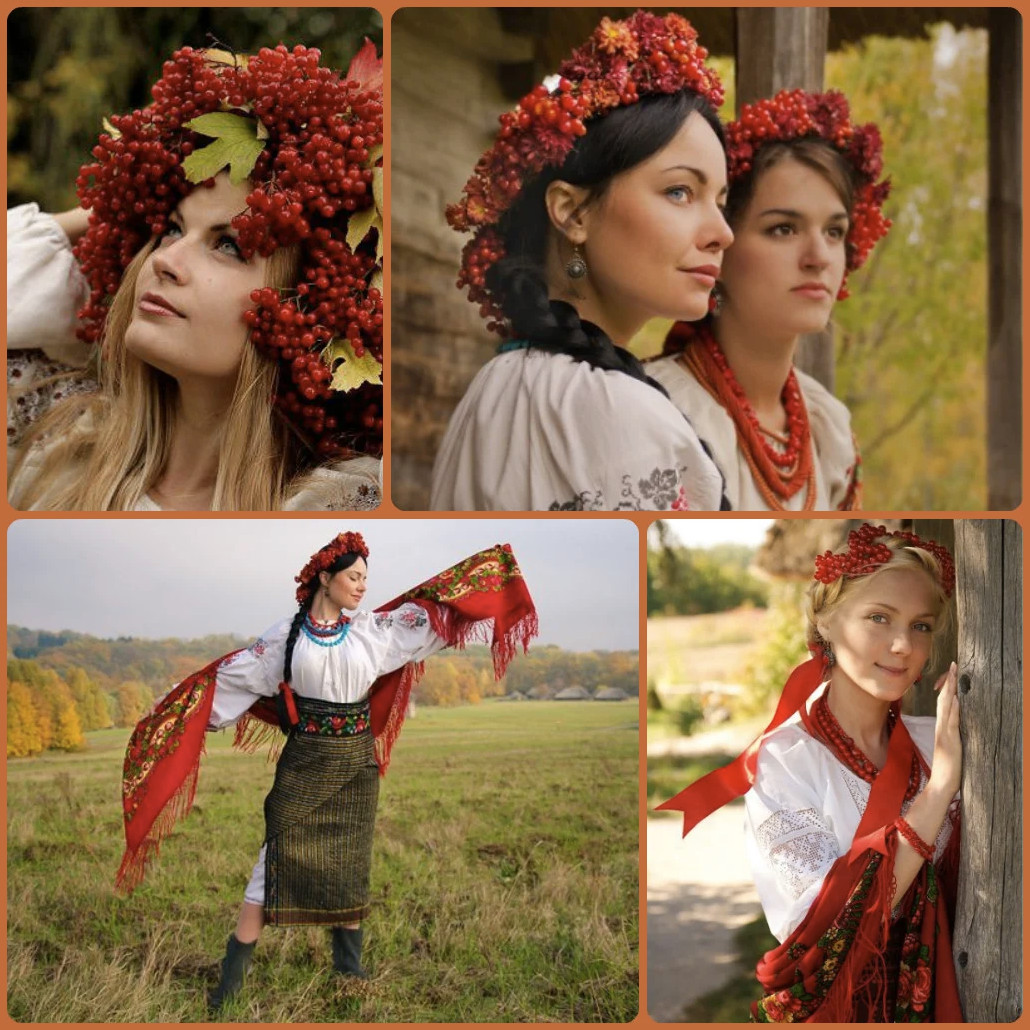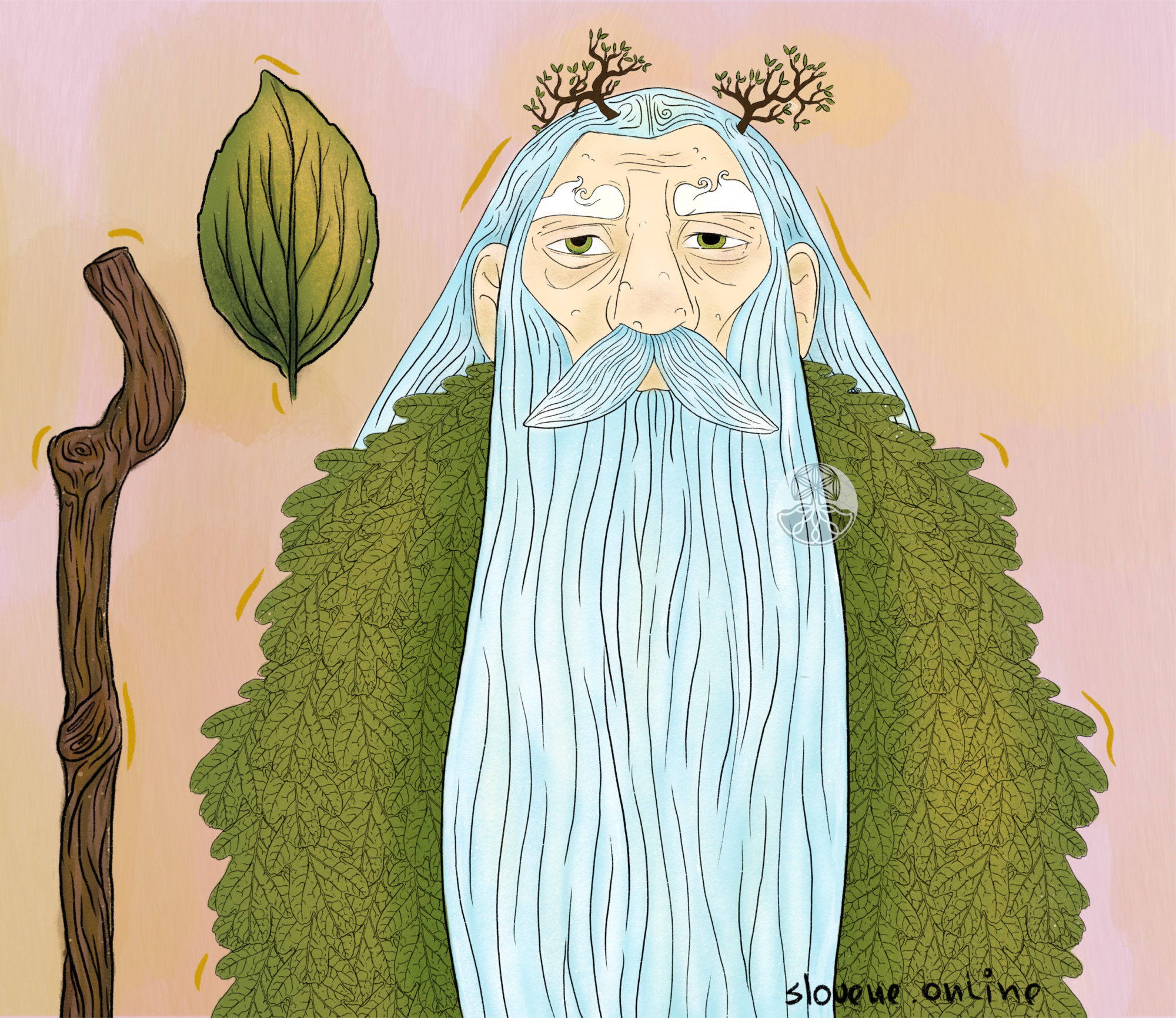Postrizhyny is the ancient Slavic ritual of the first haircut for a boy. In Serbia and Montenegro it was called “стрижене”, in Russia “пострижины”, in Bulgaria and Macedonia “стрижба”, in Poland “postrzyżyny”. This rite included cutting off strands of hair, magical rituals with it, dressing up a child in new clothes, exchanging gifts, good wishes, fortune-telling about the future, etc.
ꏍ
For Russians, the ritual hair cutting coincided with the beginning of the teachings – the knowledge transfer from the adults. Postrizhyny marked the recognition of the child as a person. Written sources testify about postrizhyny of 5–7-year-old sons of the nobility, which had an initiatory character and reflected family ties and customary law. For example, postrizhyny of Yuri and Yaroslav, the sons of the East Slavic duke Vsevolod (years 1192 and 1194), as well as the Czech duke Václav. After the ritual haircut, the prince was put into the saddle of his father’s horse, “so that he could step into his father’s stirrup”, in other words to follow his father steps. This meant the recognition of the son by the father. Also, the father’s shirt was put on him, and the whole ceremony was followed by a feast. Gallus Anonymus also describes postrizhyny of the legendary founder of the Polish Piast dynasty – Siemowit.
ꏍ
And how was the first haircut for you or for your children?
ꏍ
To be continued…
Artist: Małgorzata Lewandowska https://www.instagram.com/art_by_goria/
https://www.facebook.com/ArtByGoria
ꏍ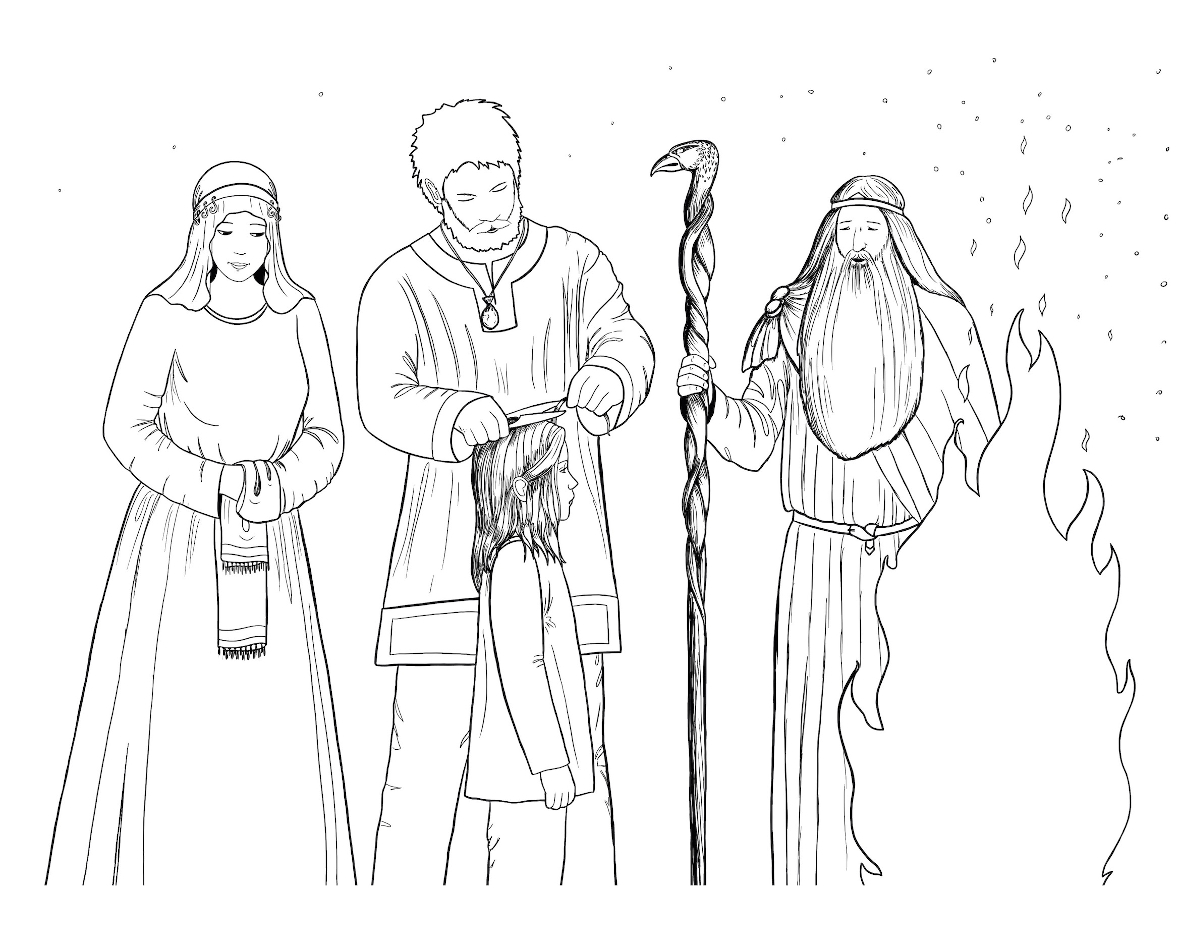
Horseshoe in Slavic rituals
Bulgarians in Thrace, during the “wolf days”, used to toss horseshoe into the fire so that the “wolf’s mouth would burn”. Housewives in Poland and Western Belarus used to heat a horseshoe on fire until it was red-hot, and then poured milk from a “spoiled” cow on it. Or they could throw the red-hot horseshoe into a milk pan in order to return the milk “stolen” by the witch to the cow and to punish that witch. They believed that the witch would come running to this house and try to steal something – if she did not succeed, she would die. In the Carpathian region of Ukraine, people believed that in order to free a witch from the power of evil spirits, one should nail a horseshoe to her bare foot.
ꏍ
Among the Bosnian Muslims, women, to cure infertility, girded themselves with an iron hoop, which was forged by a blacksmith at midnight from the horseshoe of a dead horse.
ꏍ
Sometimes, a horseshoe was used as a sacrifice. In Bulgaria, if a person got sick in some area, a horseshoe was left to the mythological owner of this place to “shoe his horse”. And in Serbia, a horseshoe and a nail were presented as a gift to the mythological creature Vileniak (half-human and half-vila with special powers over nature).
ꏍ
What other rituals with a horseshoe do you know?
ꏍ
More interesting facts can be found in: “Slavic Antiquities” encyclopedia by Institute for Slavic Studies of the Russian Academy of Sciences.
ꏍ
Horseshoe and its place in the Slavic house
Most often, the horseshoe was placed on the symbolic border of the “home space”. The Serbs buried it under the doorstep or in the foundation of the house during construction. Eastern and southern Slavs nailed a horseshoe on the doorstep or hung over the doors, as well as in the barn.
ꏍ
In the Carpathians, a horseshoe, together with an old shovel, was stuck into cabbage beds in the garden, so that people would look at these objects (and not at the cabbage) – in order to protect the crop from being “jinxed”. In Polesie, a horseshoe was placed under a girl’s pillow at night as part of a love magic ritual “to attract the boys.”
ꏍ
A horseshoe was nailed at the doorstep to “attract wealth to home,” as they said in Zhitomir (Ukraine), or for “people to be healthy like a horse,” as they said in Brest (Belarus). In Serbia, for a housewarming party, a horseshoe was nailed in front of the new house, “so that the happiness would go into the house, and not from it”. According to the Slavic tradition, a horseshoe found on the road was endowed with such special powers more than others.
ꏍ
Do you have a horseshoe at home? Where do you keep it and for what purpose?
ꏍ
To be continued…
ꏍ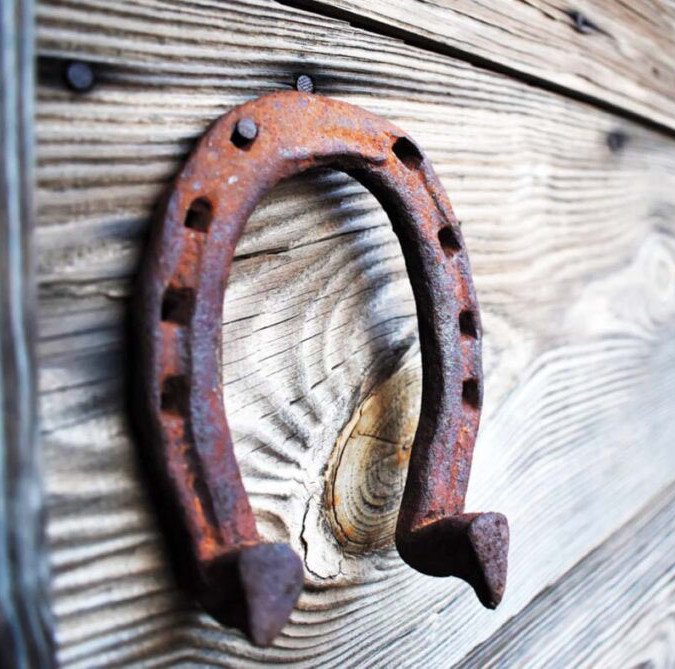
Horseshoe in Slavic tradition
Horseshoe in Slavic tradition served as a talisman both for people and house animals. It protected home from the evil eye and spirits, did not allow witches and sorcerers to “steal” milk from cows. And diseases, as the eastern and southern Slavs believed, were “captured” by the horseshoe and were not able enter the house.
ꏍ
In Russia, Serbia and Belarus, a horseshoe placed on the border of the home space was also believed to have a fertility/ producing power. It was perceived as an amulet capable of bringing good luck, happiness, fertility for people and animals, good cattle milk yield. In Polesie region, horseshoe was also used in love magic. 💕
ꏍ
Such properties of the horseshoe are due to the ability of iron to ward off evil spirits, as well as the method of crafting it (the blacksmith, forging the horseshoe, beats it with a hammer) and the fact that it was associated with a horse that trampled the horseshoe with its feet.
ꏍ
What properties do you think a horseshoe from a gift shop has?
ꏍ
To be continued…
ꏍ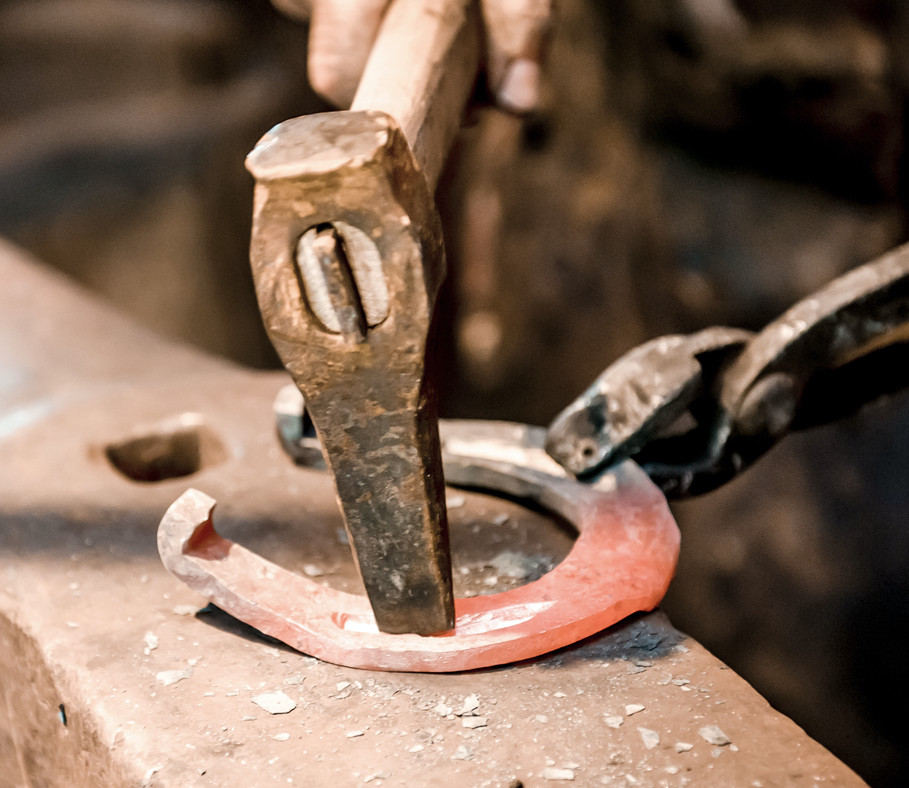
Viburnum in Slavic wedding ceremonies
Among our Slavic ancestors, viburnum played an important role in many wedding ceremonies. It was the main decoration of a wreath, a tree, a loaf and other attributes of a wedding. Wedding candles (even weapons of guests) were decorated with viburnum berries and branches, bridesmaids weaved it into their braids.
ꏍ
The Ukrainians hung a branch of viburnum on the house as a sign that the girl was being married off in this house. Belarusians, Ukrainians and Poles wove a bride’s wreath from viburnum, periwinkle and fragrant herbs. Bulgarians believed that viburnum must be in a wreath – then the young couple will love each other.
ꏍ
The expression “Viburnum bridge” (‘Kalinov most’) is very well known in Slavic folklore. Interestingly, in Polish wedding songs, the matchmakers use the viburnum branches to make a bridge for guests to go across it to the wedding.
ꏍ
Do you know how viburnum is used today (if at all) in wedding rituals?
ꏍ
More interesting facts can be found in: “Slavic Antiquities” – encyclopedic dictionary in 5 volumes by Institute for Slavic Studies of the Russian Academy of Sciences.
ꏍ